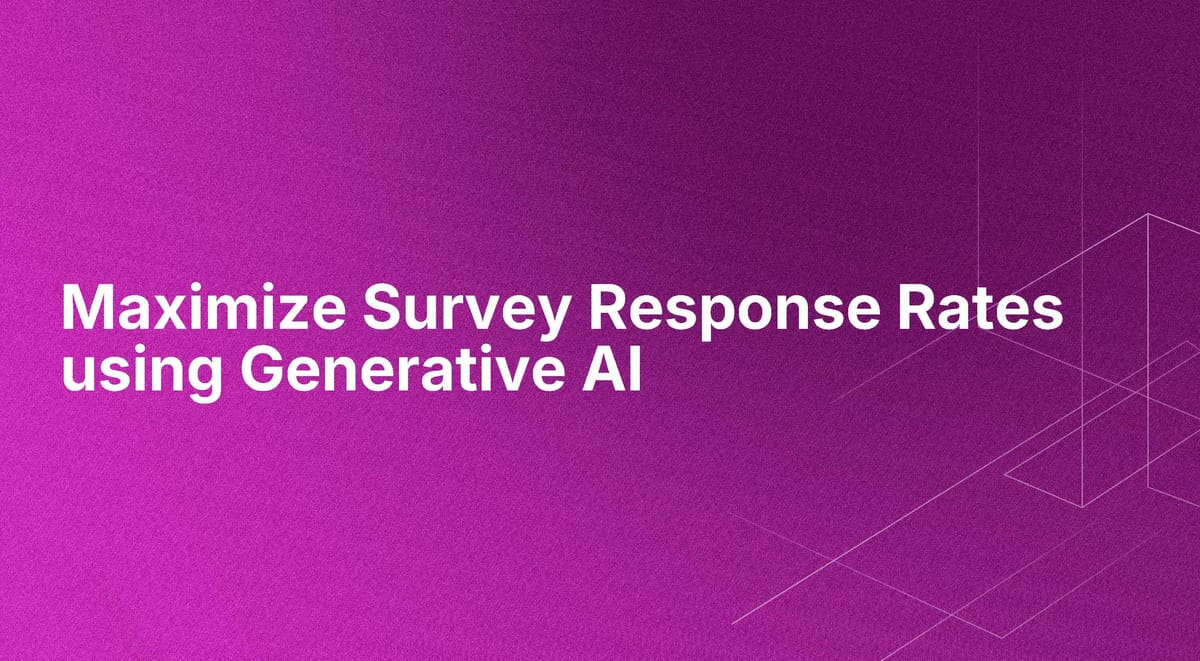Maximize Survey Response Rates using Generative AI

Enhancing survey engagement with predictive analytics and machine learning
Overview
Surveys are essential tools used across various industries including research, healthcare, education, government, and business. These instruments enable organizations to collect and analyze data from target populations to answer specific questions, gauge opinions, or make data-driven decisions. The effectiveness of a survey is often measured by its response rate—the proportion of the targeted group that actually participates. High response rates yield more reliable data, whereas low response rates can introduce significant biases.
Problem Statement
Gathering sufficient responses to surveys is a common challenge. Low response rates compromise the reliability and validity of the collected data due to potential participation bias. Without a clear understanding of what influences people’s likelihood to respond, organizations struggle to optimize their survey strategies and achieve desired outcomes.
Solution Overview
Generative AI offers a sophisticated solution to enhance survey response rates by predicting the likelihood of individual recipients engaging with the survey. By leveraging machine learning algorithms, surveyors can identify key factors that influence participation. These could include time of day the survey is sent, the type of questions asked, demographic characteristics, previous engagement levels, and other contextual variables. The AI model can then segment the target population and prioritize outreach efforts towards those predicted to be more responsive. From a technical standpoint, implementing this solution involves training machine learning models on historical survey data to understand patterns of engagement. Key features such as age, gender, past behavior, and even social media activity can be fed into the model. Once the model is trained, it can predict engagement likelihood and suggest tailored strategies to maximize participation. On the business side, this approach allows organizations to allocate resources more effectively by focusing on high-probability respondents. It enhances the accuracy of the data collected, thus leading to more reliable insights and better decision-making. Implementation typically involves integrating the AI model with survey distribution platforms, enabling seamless prediction and actioning. By continuously learning and adapting through additional data inputs, the generative AI model evolves to become increasingly effective over time, ensuring sustained improvement in survey engagement rates.





